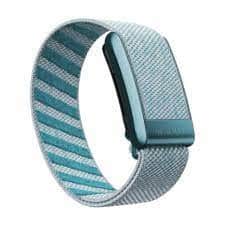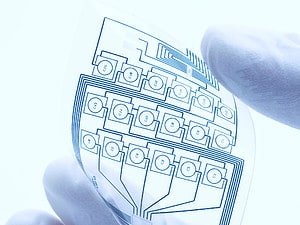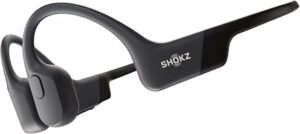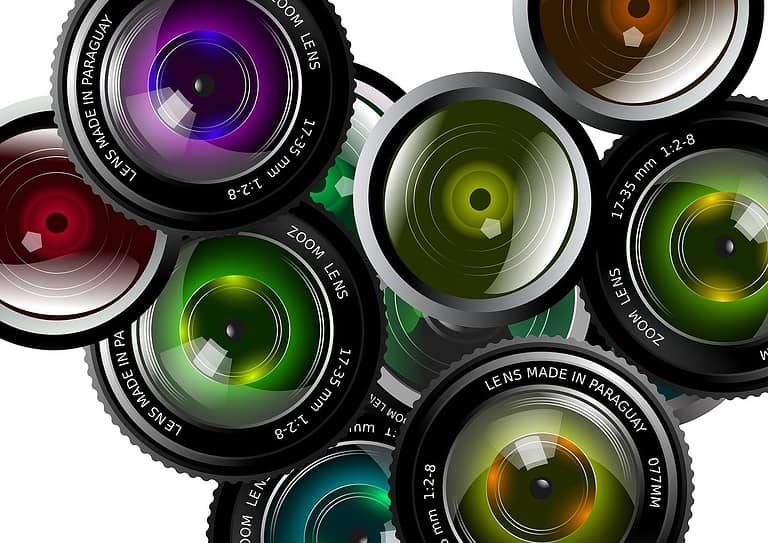29 Game-Changing Technologies: Wearables Reshaping Our Lives
Wearable technologies continue to advance at a rapid pace. These technologies all are having a major impact on the game-changing products that are in the market today, being released, or under development.
No matter what your sport is, from hiking and outdoor adventures, fitness fanatics, pickleball, or traditional sports, or if you are just a casual, active person, the wearable technology market will touch you.
What Is The Wearable Technologies Market?

The Wearables Technology falls into nine broad categories.
From immersive virtual experiences to detailed skin sensors, from the analytical prowess of AI to the seamless interconnection of the Internet of Things, the future of wearable technology is not just about being smart – it’s about being intuitively attuned, adaptable, and deeply personalized.
Let’s look at the 29 technologies that are reshaping the wearable landscape and revolutionizing how we live, work, play, and stay healthy.
1. Augmented Reality (AR):
AR overlays digital information onto the real world, creating a composite view. The application of AR in wearables ranges from gaming and education to professional fields such as healthcare, engineering, and more. For instance, AR glasses like Google’s Glass provide users with information in their field of vision without obstructing their view of their surroundings, while Microsoft’s HoloLens allows users to interact with 3D holograms blended with their environment, revolutionizing professional training and simulations.
2. Virtual Reality (VR):
VR immerses users in a completely digital environment, removing them from the physical world. This technology is often used in gaming, virtual tours, and training simulations. VR headsets like Oculus Rift, PlayStation VR, and HTC Vive provide users with fully immersive experiences that make them feel as if they’re part of a game’s world or a distant location they’re exploring virtually.
3. Internet of Things (IoT):
IoT refers to the concept of connecting any device with an on/off switch to the internet, and potentially, to each other. The connectivity of wearables to the Internet and with each other allows data to be exchanged and analyzed, facilitating remote health monitoring, fitness tracking, and more. Notable examples are fitness trackers like Fitbit and smartwatches like the Apple Watch, which use IoT to sync data with smartphones, the cloud, and other devices, providing users with health insights, notifications, etc.
4. Artificial Intelligence (AI) and Machine Learning (ML):
AI and ML are subsets of computer science that are concerned with creating intelligent machines capable of learning from data, recognizing patterns, and making decisions. Companies like Apple, Google, and Amazon incorporate AI and ML into their wearable devices, using these technologies to power voice recognition, predict user behavior, and provide personalized recommendations. For instance, AI powers the voice assistants on wearable devices, such as Apple’s Siri on the Apple Watch, Google Assistant on WearOS devices, and Amazon’s Alexa on Echo Frames, to understand and respond to user commands.
5. Biometric Sensors:

Biometric sensors measure unique biological characteristics of individuals, like heart rate, blood oxygen levels, and temperature, for identification and health monitoring. Wearable devices like the Apple Watch, Fitbit’s fitness trackers and new to market Whoop Band, incorporate a variety of these sensors to provide users with insights about their health and fitness, detect abnormal changes in our body’s responses, and encourage healthier behaviors.
6. Voice User Interface (VUI):
VUI allows users to interact with a system using voice commands, improving accessibility and providing a hands-free user experience. Major tech companies have integrated VUI into their wearable devices, such as Amazon with Alexa, Google with Google Assistant, and Apple with Siri. This allows users to ask questions, control smart home devices, set reminders, and more without having to manually interact with their devices.
7. Haptic Technology:
Haptic technology recreates the sense of touch by applying forces, vibrations, or motions to users. This tactile feedback enhances the user experience by providing a sense of touch in digital interactions. A notable example is Apple’s Taptic Engine in the Apple Watch, which provides users with subtle tactile feedback for notifications, alerts, and other interactions, making the digital interactions feel more natural and intuitive.
8. Flexible Electronics:

Flexible electronics, also known as flex circuits, are a technology for assembling electronic circuits by mounting electronic devices on flexible plastic substrates. This technology is crucial in wearable tech as it allows devices to be more comfortable and adaptable to the body’s movements. A prime example of this technology is Samsung’s flexible display technology, which has been used in their foldable phones and is expected to be integrated into their future wearable devices.
9. Energy Harvesting Technology:
This technology refers to the process of capturing and storing energy from external sources such as solar power or kinetic energy. In wearables, energy harvesting can provide a way to power devices without the need for traditional charging, extending their operating life and convenience. Seiko’s Kinetic watches, for instance, harness the energy from the wearer’s wrist movement to power the watch. Similarly, Matrix’s PowerWatch uses thermoelectric technology to power the watch using the wearer’s body heat.
10. Smart Textiles:

Smart textiles, also known as e-textiles, are fabrics that have been developed with new technologies that provide added value to the wearer. These textiles have digital components embedded in them, including sensors and a power supply. One of the most notable examples is Google’s Project Jacquard, which in partnership with Levi’s, created a smart jacket with touch-sensitive fabric and connectivity to the user’s smartphone, allowing the user to control music, get directions, and answer calls by simply touching their jacket sleeve.
11. Nanotechnology:

Nanotechnology involves manipulating matter on an atomic and molecular scale, and it’s capable of transforming the physical properties of devices, making them smaller, faster, and more energy-efficient. Companies like IBM and universities like Stanford are heavily involved in nanotech research and its application in electronics. In wearables, nanotechnology could make devices smaller and more comfortable, increase battery life, and improve data storage and processing capabilities.
12. Wireless Charging:
Wireless charging eliminates the need for power cords by using magnetic fields to transfer energy between two objects. This technology can greatly improve the convenience of charging wearable devices. The Apple Watch, for example, uses a form of inductive charging where the user simply has to place the watch on a special dock, eliminating the need for plugging in a cable.
13. Graphene Electronics:
Graphene, a single layer of carbon atoms arranged in a two-dimensional honeycomb lattice, has exceptional properties such as high electrical conductivity, strength, and flexibility. These properties make it a promising material for a variety of applications in electronics, including wearable tech. Companies like Versarien and Directa Plus are among those leading the way in developing graphene-based tech, which could lead to the creation of thinner, flexible, and more efficient wearable devices.
14. MicroLED Display Technology:
MicroLED technology uses microscopic light-emitting diodes to create digital displays, offering significant improvements over traditional LED/LCD displays in terms of brightness, contrast ratio, and energy efficiency. Tech giants like Apple and Samsung are heavily investing in this technology, with the potential to use these brighter, more energy-efficient displays in future wearable devices.
15. Ultra-Wideband (UWB):
UWB is a radio technology that uses a very low energy level for short-range, high-bandwidth communications over a large portion of the radio spectrum. It allows for precise tracking of objects and high-speed data transfer. Apple’s AirTags use UWB tech to provide precise, directionally aware finding experiences when a user is nearby their lost item.
16. 5G Connectivity:
5G is the latest generation of cellular networks, offering faster data transfer rates, lower latency, and better connectivity. In wearables, 5G could enable more advanced features like high-quality video streaming, more reliable and faster communication with IoT devices, and more. Qualcomm, a leader in creating semiconductors and telecommunications equipment, is a major provider of 5G modems for smartphones and is likely to be a key player in bringing 5G connectivity to wearables.
17. eSIM Technology:
eSIM, or embedded SIM, is a digital SIM that lets you activate your cellular plan from your carrier without having to use a physical nano-SIM. This technology, used by Apple’s Watch Series 3 and later, enables wearable devices to connect to cellular networks independently of a smartphone, making them truly standalone devices.
18. Quantum Dot Technology:
Quantum dots are nano-sized semiconductor particles that can emit light of various colors depending on their size. Quantum dot displays offer vibrant colors and improved energy efficiency over traditional displays. Companies like Nanosys are leading the development of quantum dot technology, which could be used in future wearable displays to offer better color reproduction and efficiency.
19. Bone Conduction Technology:

Bone conduction technology transmits sound to the inner ear through the bones of the skull, allowing the wearer to receive information without obstructing the ear canal. This technology is particularly useful in headphones for runners and cyclists who need to maintain awareness of their surroundings. Aftershokz, for instance, uses this technology in their headphones, allowing users to listen to music or take calls without blocking their ears.
20. Thermal Energy Harvesting:

Thermal energy harvesting is a process that captures and uses waste heat energy that would otherwise be lost. This technology could potentially power wearable devices using the body heat generated by the wearer. Matrix Industries, for example, is developing wearable tech powered by body heat, reducing the need for charging.
21. Biosensors:
Biosensors are analytical devices that convert a biological response into an electrical signal. They are increasingly being used in wearables for health monitoring. Dexcom, for example, has developed a wearable biosensor that continuously monitors glucose levels for people with diabetes, providing real-time data and alerts to the user.
22. Photoplethysmography (PPG) Sensors:
PPG sensors use a light source and a photodetector at the skin surface to measure the volumetric variations of blood circulation. This technology is commonly used in wearable devices to measure heart rate. The Apple Watch and many Fitbit devices use PPG sensors to continuously monitor users’ heart rates, helping track fitness levels and alerting users of potential heart-related health issues.
23. Biometric Authentication:

Biometric authentication uses unique biological characteristics, such as fingerprints, facial features, or voice patterns, to verify identity. This technology can add an extra layer of security to wearable devices. Apple, for instance, uses FaceID and TouchID biometric technologies in its devices for secure authentication.
24. Neurotechnology:
Neurotechnology refers to the devices and methods that interact with the nervous system. In wearable tech, this could include devices that read EEG signals to control VR environments or to assist people with disabilities. Companies like Neurable are creating EEG headbands that allow users to control VR games using their thoughts.
25. Microfluidic Technology:
Microfluidic devices control and manipulate tiny amounts of fluid, on the order of microliters or nanoliters. This technology is useful in medical wearables where small amounts of bodily fluids might be used for testing. Seventh Sense Biosystems, for instance, is developing wearable tech that uses microfluidics for painless blood collection and testing.
26. NFC (Near Field Communication):
NFC enables close proximity wireless communication between devices. This technology is commonly used in wearables to support contactless payments. With NFC, devices like the Apple Watch or those running Google’s WearOS can be used to make payments using services like Apple Pay or Google Pay simply by holding the device near a payment terminal.
27. Electrochromic Materials:
Electrochromic materials are materials that change color or opacity when an electrical charge is applied. This technology could be used in wearable devices to create displays that can change color or become transparent as needed. Razer, a company known for its gaming peripherals, uses this technology in its Chroma product line to provide customizable RGB lighting.
28. Magnetometer Sensors:
Magnetometer sensors detect magnetic fields, which can be used to determine orientation relative to the Earth’s magnetic field. This can be used in wearable tech to aid in navigation and to track movements. Both Apple and Samsung include magnetometers in their smartphones and wearable devices.
29. Smart Insoles and Footwear Technology:
This technology includes sensors and other tech embedded in footwear to track various metrics such as distance traveled, speed, and even form for sports training. Companies like Nike and Under Armour have developed smart shoes that can track these metrics and provide feedback to athletes, helping improve performance and prevent injury. Some VR systems also use smart insoles to track foot movements for more immersive gameplay.
Summary
Wearable technology is revolutionizing the fields of sports, health, and outdoor activities by delivering game-changing experiences and providing crucial insights into performance and well-being.
Athletes can leverage immersive virtual and augmented reality for training and skill development in sports. At the same time, motion sensors provide precise tracking of movements to refine technique. High-performance athletes benefit from personalized insights and predictive analytics, made possible by AI and machine learning advancements.
Health-focused wearables have seen a massive surge thanks to their ability to monitor key health metrics. Fall detection offers peace of mind for older adults or those with health concerns, and biometric monitoring provides real-time tracking of vital signs. Skin sensor technology adds another layer of health tracking, monitoring skin health and changes in real time.
These technologies have also enhanced outdoor activities. GPS tracking allows adventurers to navigate unfamiliar terrains safely. In addition, innovative features like energy harvesting provide power for wearables even in remote areas. Smart fabrics and flexible wearables offer comfort and resilience in various weather conditions, and the ability to call for help with just a touch (through NFC technology) adds an extra layer of safety.
From smart rings and glasses to high-tech footwear, advances in wearable tech is changing the way we interact with the world around us.
Credits: Image by macrovector







